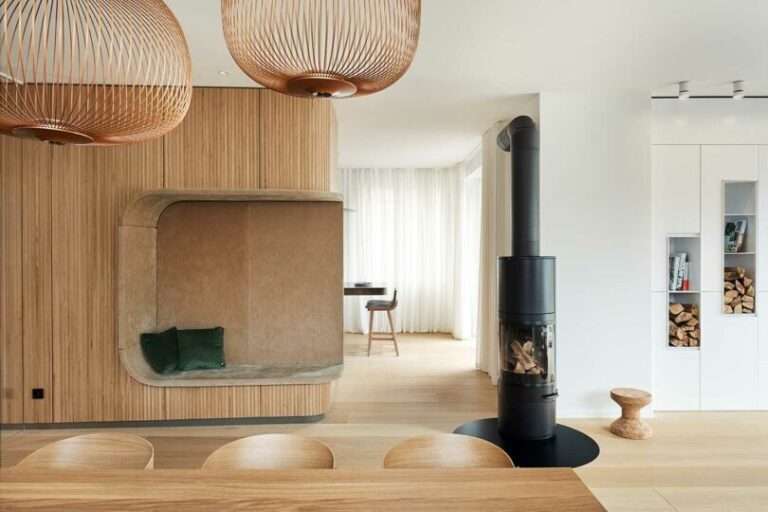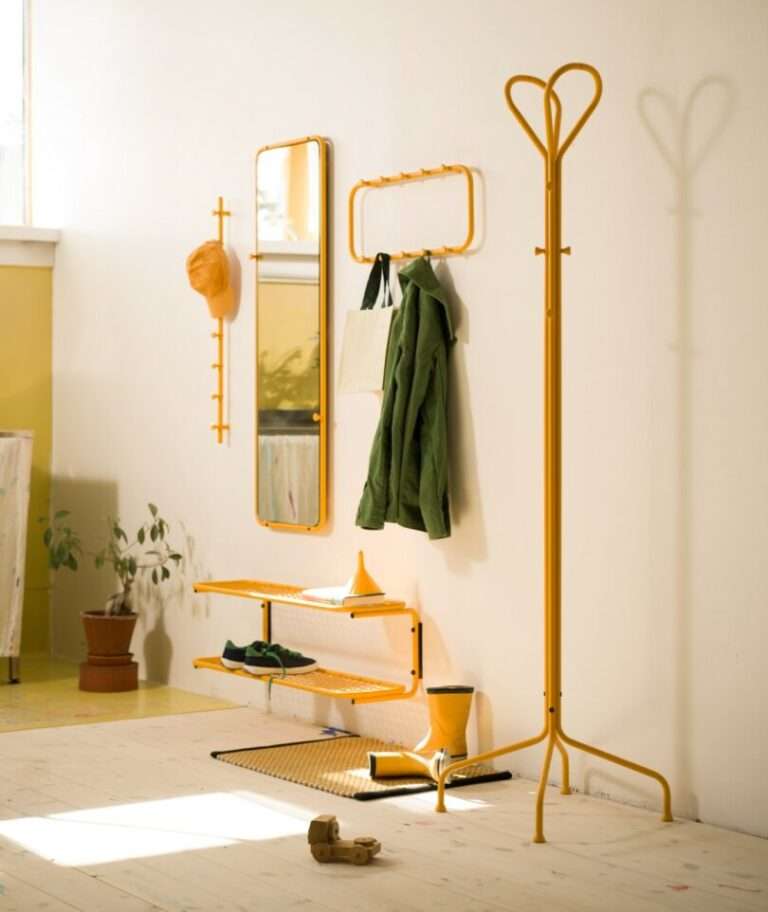Designer Antonio Citterio and Vitra’s history of collaboration now spans an impressive three decades. Beginning in 1988 with the first AC task chair, followed by numerous iterations after, the architect/designer has investigated the science of seating adorned with an artful eye for making ergonomics as visually comforting to the eyes as the chairs are to the body. Citterio’s tenth task chair with the brand, the Vitra ACX, arrives as an evolution of that long-lasting partnership – a chair not only serving the tenets of universal ergonomics for the home or office, but also one embracing the goal of producing an object with a “long service life with the smallest possible carbon footprint.”

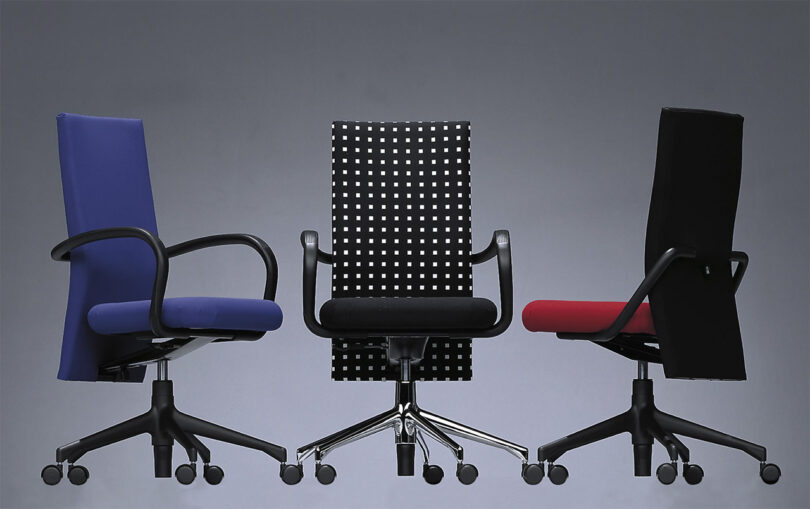
Citterio and Vitra’s first collaboration took form in the AC1 in 1988, a juxtaposition of forms, patterns, and colors reflective of that postmodern era.
Vitra is calling the ACX “arguably the most sustainable task chair available,” a claim supported by the chair’s 100% recyclable construction (with the caveat the percentage does change according to specific customization options). Constructed with a limited number of components to simplify service and maintenance, Citterio explains, “The use of up to 100% recyclable materials was the single most important factor in the design process.”

Aesthetically, the ACX’s three-dimensional form-fitted knit covering the backrest is intentionally minimalist and without the intrusion of seams, yet the fabric retains a tactile imprint design promising supportive softness. The airiness of the mesh fabric design will appeal to those who prefer a lightweight presence across the back versus a traditionally padded support.
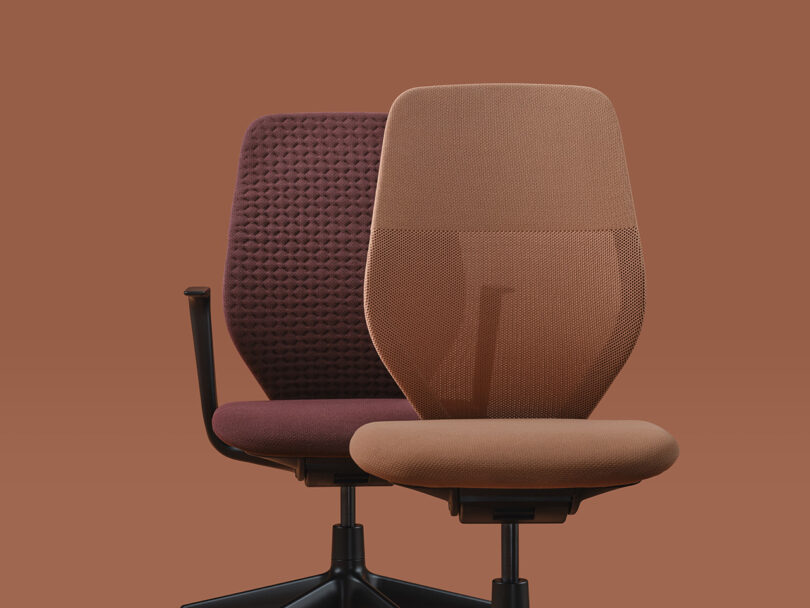
Made from 100% recycled polyester the knit cover is expressed in muted tones, resulting in a slight melange effect to complement both the ACX’s dark- and light-colored frame options.
The ACX is my tenth office swivel chair with Vitra and embodies the extensive know-how acquired throughout 30 years of close collaboration.
– Antonio Citterio
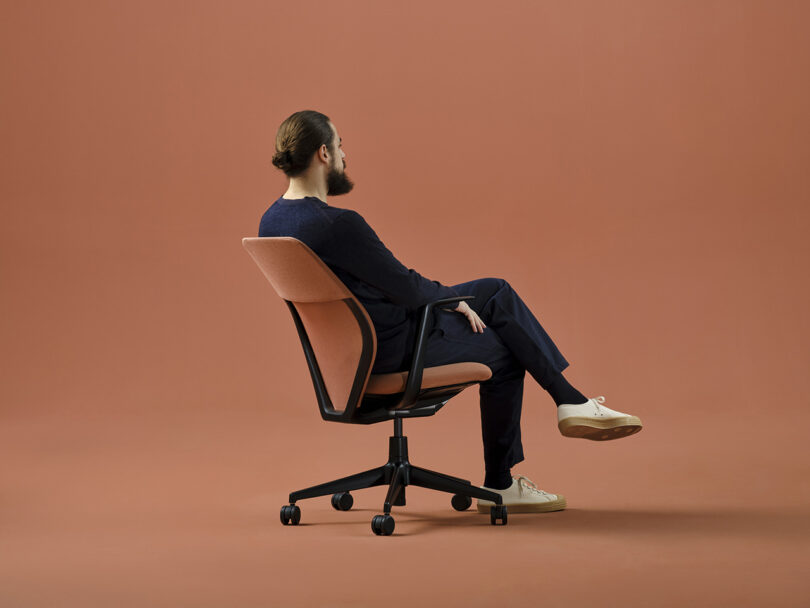
There has been an ongoing trend of subtracting controls from task chairs and the ACX follows suit. The elimination of physical controls can be attributed to reducing weight, cost, and in turn any confusion related to adjustment operation. In lieu of buttons and levers, the ACX’s mechanism automatically adjusts to a wide range of user weights, with only the seat’s height manually adjustable. Otherwise the chair is engineered to respond and adapt immediately to a person’s body, offering comfort and optimal support without a single control push, turn, or pull.
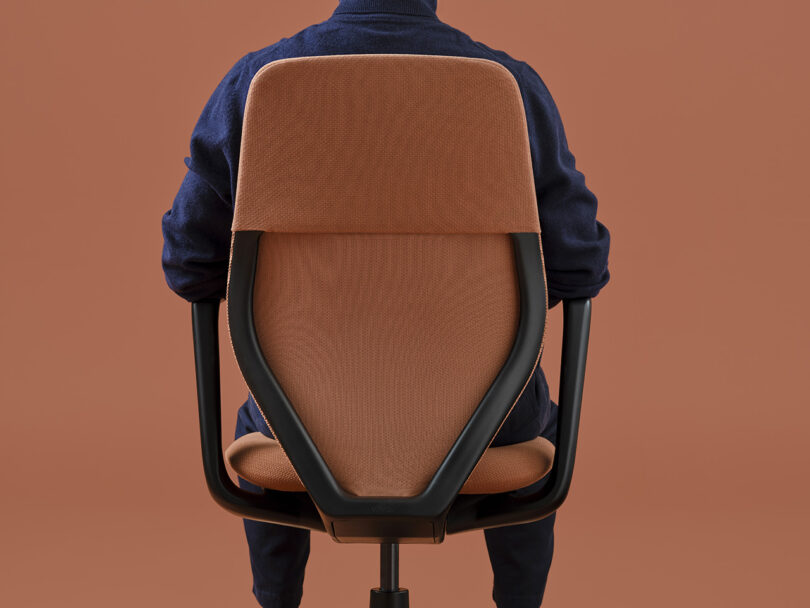
The lower part of the ACX backrest is a frame designed to offer lumbar support and optimal air circulation. Paired with a mesh or knitted cover stretched over this structure, the shell construction offers a great freedom of movement in the upper back and shoulder area unhindered by a frame.
The chair’s adaptive mechanisms are seamlessly integrated into the panel under the seat – an “adaptive” design, as described by Citterio – contributing to the chair’s compact design and uncluttered appearance. The mechanism is available with or without forward tilt, while the other features – height, seat depth, backrest lock, and two counterweight settings – are always included as standard.
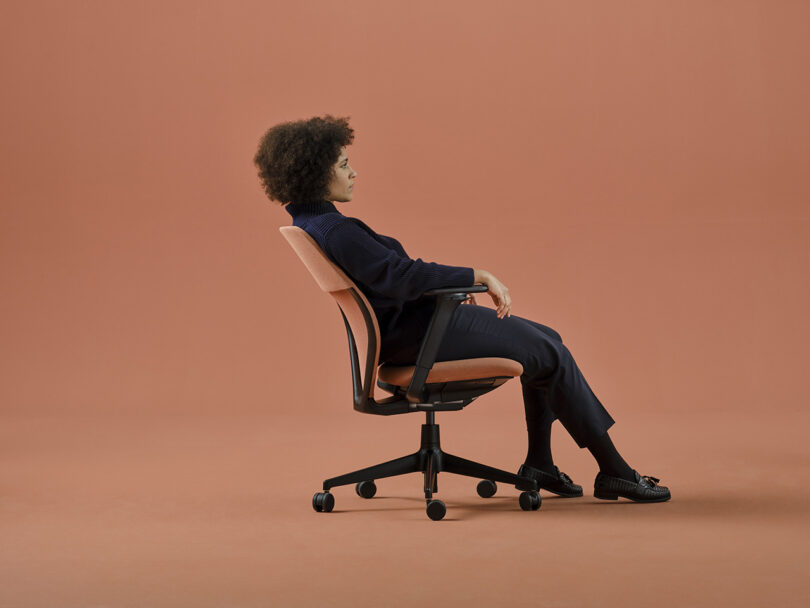
“When you use a recycled material, the design needs to adapt to its inherent characteristics, while the overall production process has to take the physical and mechanical qualities of the material into account,” explains Citterio. “The structural elements in ACX are made of up to approximately 60% recycled materials, depending on the model.”
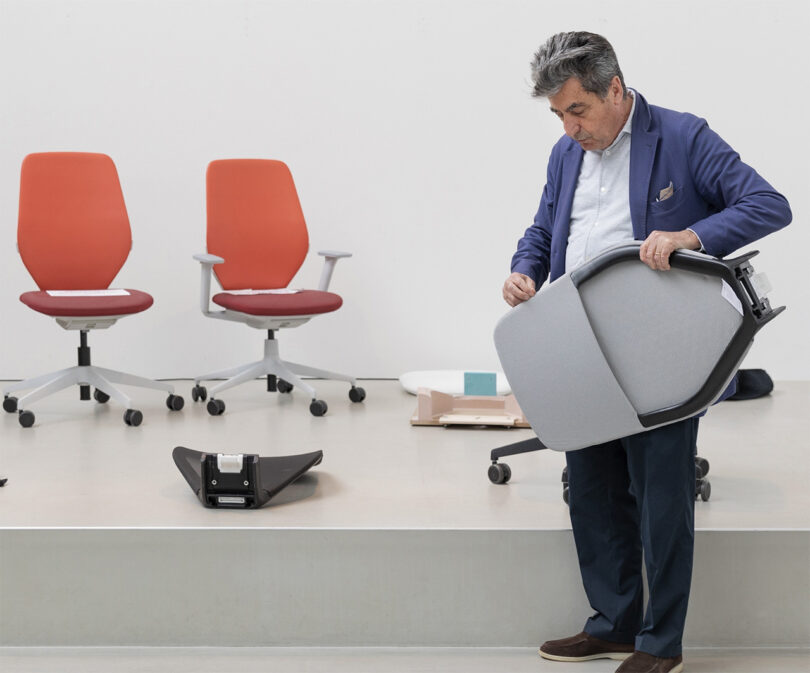
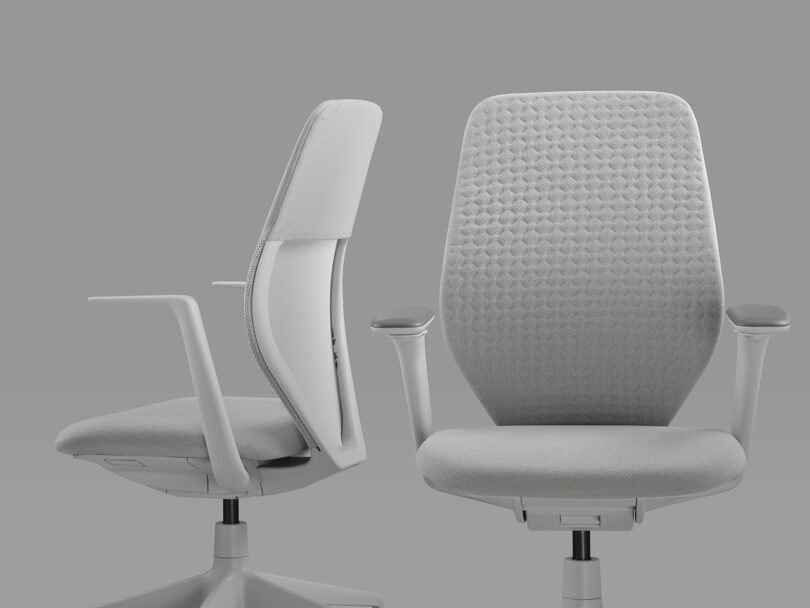
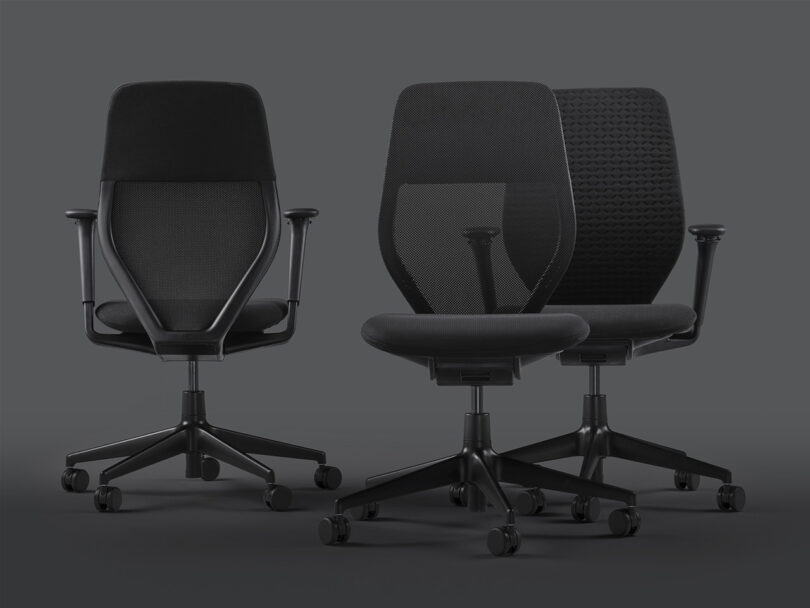
While Citterio’s ACX design alludes to concerns about the environment, its adaptive nature is also a response to the evolution of the work environment itself. “I see the office environment becoming more and more collaborative, more relaxed, less hierarchical, with the emergence of more informal, flexible, multi-purpose meeting spaces and ‘disruptive’ elements derived from residential ambiances.”

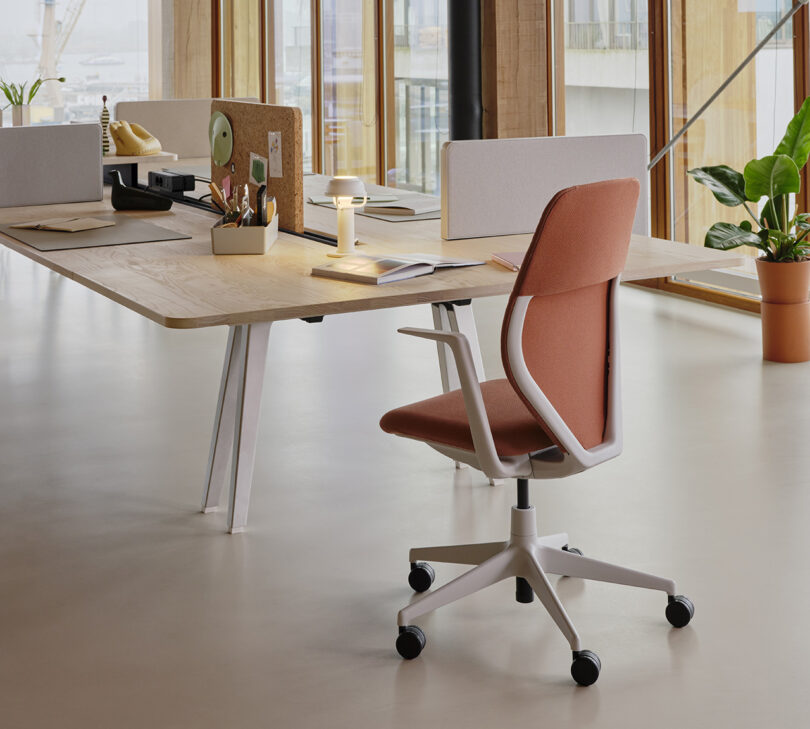
The ACX is available with height-adjustable armrests or 3D armrests, alongside in a range of natural muted tones.

Antonio Citterio Photo: Gianluca Di Ioia
The Vitra ACX is available in three versions: Mesh, Soft, and Light. The ACX Mesh starts at $990 and is outfitted with a knitted semitransparent fabric backrest, the ACX Soft starting at $1105 with a padded knit cover, with the entry-level ACX Light starting at $875 with a standard mesh knit cover (but only available in black).

